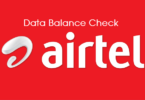When working online and creating a digital project you need to consider several promotional activities. Of course, initially we focus only on organic ones such as SEO, off-page activities such as link building , the creation of digital public relations, but then it is also necessary to think about paid advertising such as SEM.
SEM or Search Engine Marketing refers to those paid strategies that must be applied in conjunction with those to generate organic traffic such as SEO and public relations activities. Let’s find out more about SEM and the benefits it can offer to a digital brand or project.

What is SEM and what is meant by Search Engine Marketing
SEM stands for “Search Engine Marketing,” which refers to digital marketing strategies used to increase a website’s visibility in search engine results.
While Search Engine Optimization (SEO) focuses on optimizing your website to improve its position in organic (unpaid) search results, SEM strategies include both search engine optimization (SEO) and use of paid advertising.
The term SEM generally refers in particular to paid advertising strategies on search engines, such as Google Ads or Bing Ads.
These platforms allow companies to create ads that appear in search results when users search for certain keywords.
For example, if you run an online shoe business, you could use Google Ads to create an ad that appears when users search for “dress shoes.”
You would pay every time a user clicks on your ad, hence the term “ pay-per-click ” (PPC) which is often used in relation to SEM.
SEM offers several benefits , including the ability to quickly reach a large audience of people who are actively searching for your products or services. Plus, since you only pay when someone clicks on your ad, you can get a good return on your investment if your campaign is managed effectively.
SEO and SEM can be used together to maximize visibility in search engines, they require different strategies but both offer high advantages for your online business.
SEM, PPC, CPM and CPA – all the main ad payment activities
Search Engine Marketing allows you to increase the visibility of a website in search engine results through paid advertising. However, there are different payment methods for ads. Let’s look at some of the fundamentals of SEM trying to understand the differences between the various methods.
Let’s start with the most famous one : Pay-Per-Click . PPC is a digital advertising model in which advertisers pay every time a user clicks on one of their online ads.
Usually, these ads appear in search engine results such as Google or Bing. In a PPC auction, advertisers bid on specific keywords relevant to their target audience.
When users search for one of these keywords, the search engine shows the advertiser’s ad. If the user clicks on the ad, the advertiser pays the cost per click.
Unlike PPC, where advertisers pay for every click on an ad, with the CPM model, advertisers pay for every 1,000 impressions of their ad . This model is commonly used for advertising campaigns that aim to build brand awareness rather than generate direct clicks or conversions.
The third model we want to present to you is the CPA stands for ” Cost Per Action ” or ” Cost Per Action “. It is an online advertising billing model in which an advertiser pays for a specific action taken by a potential customer.
The action can be a purchase, a registration, a download, a click on a link or any other action that the advertiser wants the potential customer to take.
In other words, instead of paying every time the ad is viewed (as in the CPM model) or every time it is clicked ( as in the PPC model ), we use a CPA model that pays only when the user takes an action specifies that it has value for the company.
CPA is particularly appreciated by marketers because it allows you to directly link the cost of advertising with the achievement of specific objectives, such as the acquisition of new customers or increased sales. In this way, it is possible to precisely measure the ROI ( Return On Investment ) of advertising campaigns.
How to set up an SEM strategy on Google Ads
One of the main channels used for advertising your site on advertising channels is certainly Google Ads. To create an advertising campaign on the Google Ads platform it is necessary to carry out a very careful and well-planned activity.
If you don’t know the tool well, it’s always a good idea to think about the support of a professional to be able to obtain a good ROI by obtaining good results for an investment in line with your budget.
However , setting up an effective SEM ( Search Engine Marketing ) strategy on Google Ads involves a series of specific steps, first of all the definition of objectives. The main ones typically include: increasing website traffic, lead generation, sales of products or services, or increasing brand awareness.
Keywords are critical to the success of an SEM campaign. Using tools like Google Keyword Planner or other SEO tools you can easily find keywords relevant to your business and target audience.
In Google Ads, you can set up your campaign by choosing the best keywords, setting your budget, creating your ads and selecting targeting options ( such as geographic location, age, gender, etc. ).
There must also be attention and care given to the titles and descriptions of the adverts with the right copywriting techniques , thus encouraging users to click on the adverts.
Also remember to direct users to a page on the website that is directly related to the ad and that encourages the user to take the desired action (such as purchasing a product, signing up for a newsletter, etc.).
Once the campaign has been launched, it is essential to monitor its results and optimize it based on the data collected. Google Ads offers analytics tools that allow you to see how many clicks your ads receive, what the conversion rate is, how much you are spending per click, etc. Using this information you can make changes to the campaign and improve its effectiveness.
Doing an A/B test on various elements of the campaign, such as the ad copy or the landing page, can help you understand what works best and optimize the campaign accordingly.
All the platforms on which to do SEM
Search Engine Marketing (SEM) refers to the practice of using paid advertising to increase a website’s visibility in search engine results.
In addition to Google Ads which allows you to create a variety of ad types, including text ads, graphic ads, video ads and mobile ads, and is certainly one of the most used in the world, there are also:
- Bing Ads: Even though Bing doesn’t have the same search volume as Google, it is still a significant option for SEM campaigns. Bing Ads is similar to Google Ads, but it also offers some unique features.
- Yahoo! Search Ads: Yahoo! partnered with Bing to form the Yahoo Bing network; so, if you advertise on one of these platforms, your ads will appear on the other as well.
- Baidu: If you are looking to reach the Chinese market, Baidu is the most popular search engine in China and offers a platform for SEM ads.
- Yandex: It is the most popular search engine in Russia and also provides a platform for SEM.
- Amazon Advertising: Not a search engine in the traditional sense, but Amazon is the most popular place to search for products online, and its advertising platform offers numerous options for SEM ads.
Always including an SEM strategy allows you to achieve targeted results and create a paid advertising strategy that can be fully monitored and lead to an optimized ROI, return on investment for your business.






